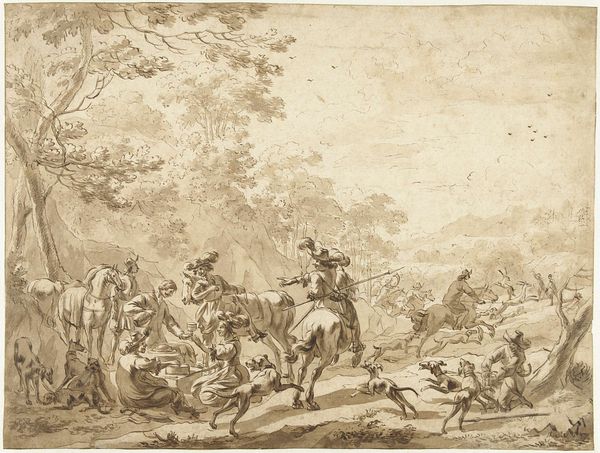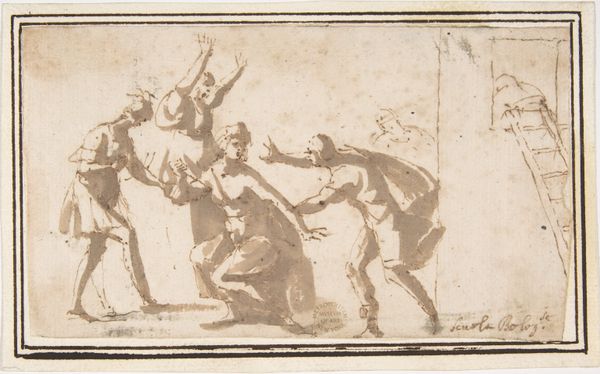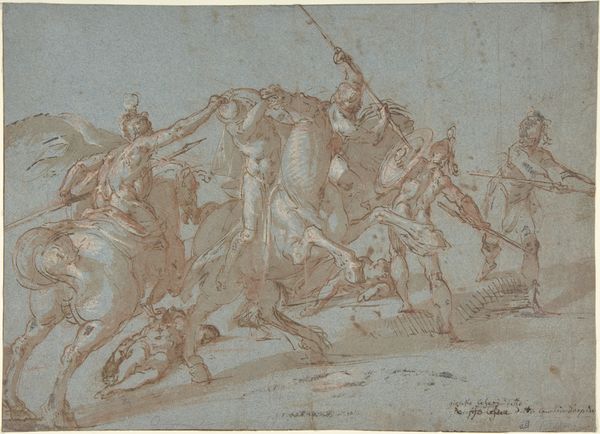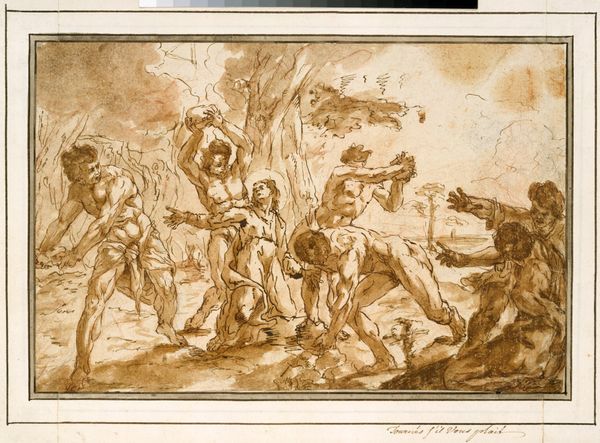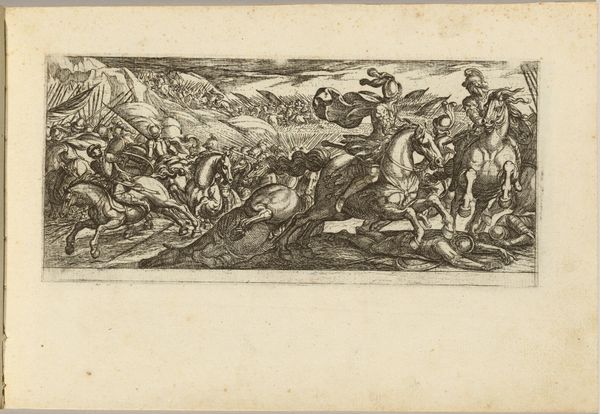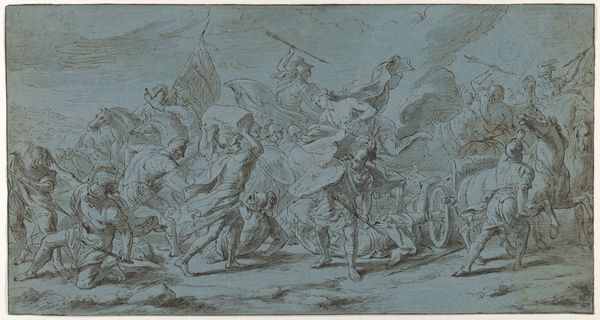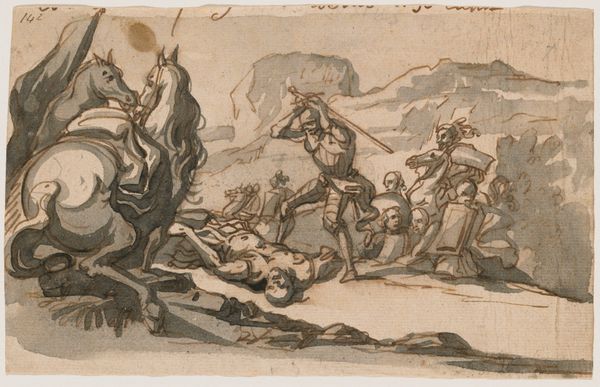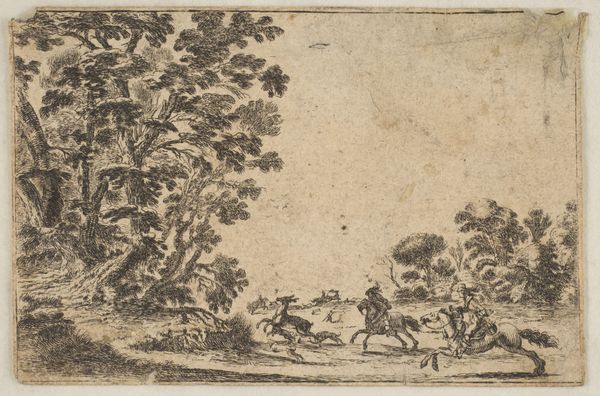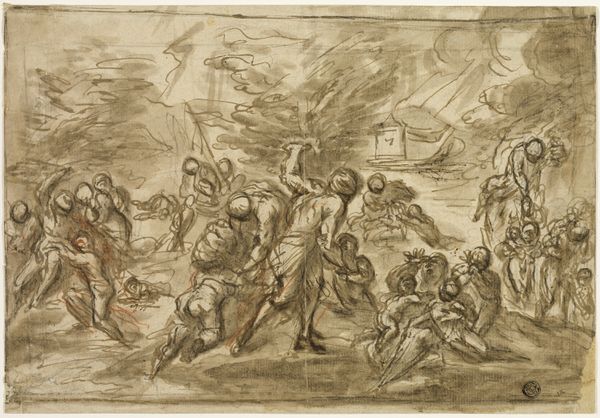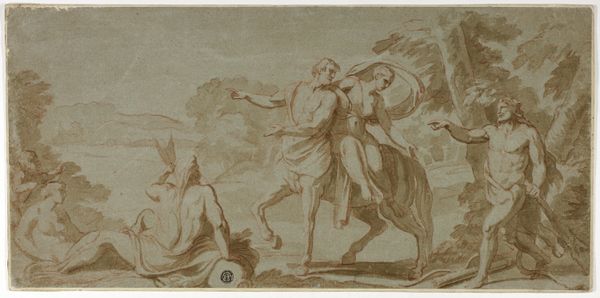
Unidentified Scene: Figures in a Landscape 1624 - 1663
0:00
0:00
drawing, print, ink
#
drawing
#
ink painting
# print
#
human-figures
#
landscape
#
figuration
#
ink
#
history-painting
#
italian-renaissance
#
watercolor
Dimensions: 3-1/8 x 4-1/2 in. (7.9 x 11.4 cm)
Copyright: Public Domain
Curator: At first glance, I see turmoil. Figures are falling, perhaps fleeing; the monochromatic wash creates an atmosphere of immediate chaos. Editor: This intriguing drawing is attributed to Francesco Allegrini and is titled, "Unidentified Scene: Figures in a Landscape". Likely executed between 1624 and 1663, it employs brown ink wash on paper. We are fortunate to view this work today, courtesy of the Metropolitan Museum of Art. Curator: “Unidentified” feels apt. The lack of specifics pushes the imagery toward archetypal struggles, reminiscent of scenes from classical mythology. Are those figures tumbling from a precipice? Or perhaps driven by some external force? Editor: It's difficult to say definitively, isn't it? Renaissance artists frequently utilized classical themes. I think what makes it compelling is the dramatic sense of action combined with the lack of narrative clarity. Curator: Exactly. The open-endedness invites interpretation, echoing familiar tropes of upheaval and transition. Consider the repeated image of the “fall” throughout art history—Adam and Eve, Icarus—the image of a human losing footing signifies the fragility of life. Editor: I wonder, what kind of social function drawings of this nature had? Was it a preparatory sketch? A demonstration of skill? Italian Renaissance art was often entwined with the cultural and political power structures of the time. This period witnessed intense competition among artists to secure commissions and demonstrate artistic capabilities, but this work’s function is uncertain. Curator: It reminds us that, sometimes, an image's potency lies not in a clear story, but in its capacity to tap into universal emotions and shared symbolic language. Editor: A wonderful observation. While this scene remains open to historical interpretation, its emotive visual language offers its audience opportunities to engage deeply with familiar themes, as relevant today as it was when the ink touched the paper.
Comments
No comments
Be the first to comment and join the conversation on the ultimate creative platform.
